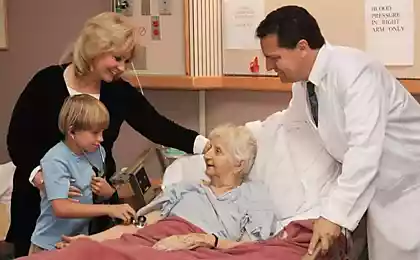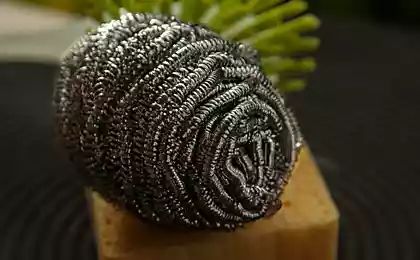139
I knit natural washcloths to all friends as a gift, give a master class
Synthetic washcloths are good because they are easily foamed and have a low cost. Such washcloths are made of polyethylene, nylon or foam. Plus, the synthetic washcloth easily foams and dries quickly. But it quickly loses shape, breaks easily and can sometimes be allergic to it. Today I want to talk about how it works. jute And why is it better than synthetic sponges?

jute This is a plant from which ropes, bags and insulation are made. Jute is gaining popularity due to the difficult environmental situation in the world. More and more people choose things from natural materials and refrain from buying plastic. Within a week, the sponge loses sight. At best, thrifty housewives wash the stove with such a washcloth, then plumbing, and still the washcloth is in the trash can.

Natural washcloth of jute is an alternative to disposable washcloths. You can tie such a washcloth for washing dishes or hang in the bathroom. Jute washcloth copes with pollution no worse than disposable. And it will last a year, unlike a foam sponge. When the jute washcloth has served its purpose, it can be burned or buried in the ground, where the jute will rot safely.
The washcloth can be tied in any shape, it is not at all difficult. I knit a kitchen washcloth in half an hour. The master class is also suitable for those who do not know how to knit. At the end of the article, I will attach a video analysis from a young master, who told in detail how to tie an eco-cage.

You'll need it.
A natural washcloth made of jute twine knits in one breath. It is very easy to knit when you can explain every step of a skilled master. As promised, I share a video lesson from the master Daria. How deftly she makes the loops of a booklet! My left hand was not easy to handle. It seems that the beech is the most difficult thing in knitting a washcloth.
about:blank
It is very important not to tighten the thread when knitting a washcloth. The more you tighten, the longer the washcloth will dry, and the tougher it will be. I've already tried washing dishes with such a washcloth and to be honest, she even washes dirty pans. The main thing - after using it, rinse with soda or wash with soap. Drying a washcloth from jute is better in suspension in the sun.

jute This is a plant from which ropes, bags and insulation are made. Jute is gaining popularity due to the difficult environmental situation in the world. More and more people choose things from natural materials and refrain from buying plastic. Within a week, the sponge loses sight. At best, thrifty housewives wash the stove with such a washcloth, then plumbing, and still the washcloth is in the trash can.

Natural washcloth of jute is an alternative to disposable washcloths. You can tie such a washcloth for washing dishes or hang in the bathroom. Jute washcloth copes with pollution no worse than disposable. And it will last a year, unlike a foam sponge. When the jute washcloth has served its purpose, it can be burned or buried in the ground, where the jute will rot safely.
The washcloth can be tied in any shape, it is not at all difficult. I knit a kitchen washcloth in half an hour. The master class is also suitable for those who do not know how to knit. At the end of the article, I will attach a video analysis from a young master, who told in detail how to tie an eco-cage.

You'll need it.
- jute
- hook
- shears
- Make an amigurumi ring: circle the thread around your fingers and hook the thread. Tie the air loop. You will get 1 loop on the ring, which is tightened.
- Tie 6 air loops. Now tighten the ring and connect a series of connecting loops.

- Starting from the first row, you need to tie each loop with a beech loop. Fill the thread with your thumb forward and tie the column without a cape. Then put your thumb forward again and tie the 2nd column without a cape in the first loop. In this row, you need to make an increase in each loop so that the circle expands and consists of 12 loops.

- To mark the beginning of the row, pin a marker or pin at the end of the row.
- The 2nd row should be knitted with a column without a cape with beech loops and in each second loop make an increase.

- The 3rd row is tied with a column without a cape with an increase in each third loop of the previous row.
- The 4th row is tied with an increase in the fourth column.

- The 5th row is tied with air loops without a beech with an increase in the 6th column.
- At the end of the row, dial 8 air loops and tie the 6th row with a column without a cape and without increases. Cut the thread and hook it between the hinges in the washcloth. Done.

A natural washcloth made of jute twine knits in one breath. It is very easy to knit when you can explain every step of a skilled master. As promised, I share a video lesson from the master Daria. How deftly she makes the loops of a booklet! My left hand was not easy to handle. It seems that the beech is the most difficult thing in knitting a washcloth.
about:blank
It is very important not to tighten the thread when knitting a washcloth. The more you tighten, the longer the washcloth will dry, and the tougher it will be. I've already tried washing dishes with such a washcloth and to be honest, she even washes dirty pans. The main thing - after using it, rinse with soda or wash with soap. Drying a washcloth from jute is better in suspension in the sun.
Home plants will bloom lush, the house will be a jungle, if you follow all the recommendations of the grower
While the girl suffered, giving birth to the baby, the husband cheated with her mother




























